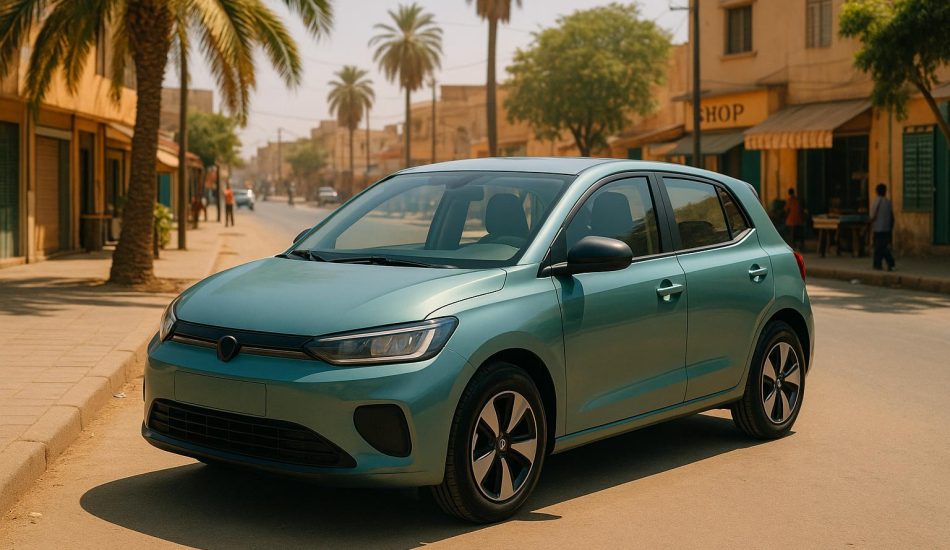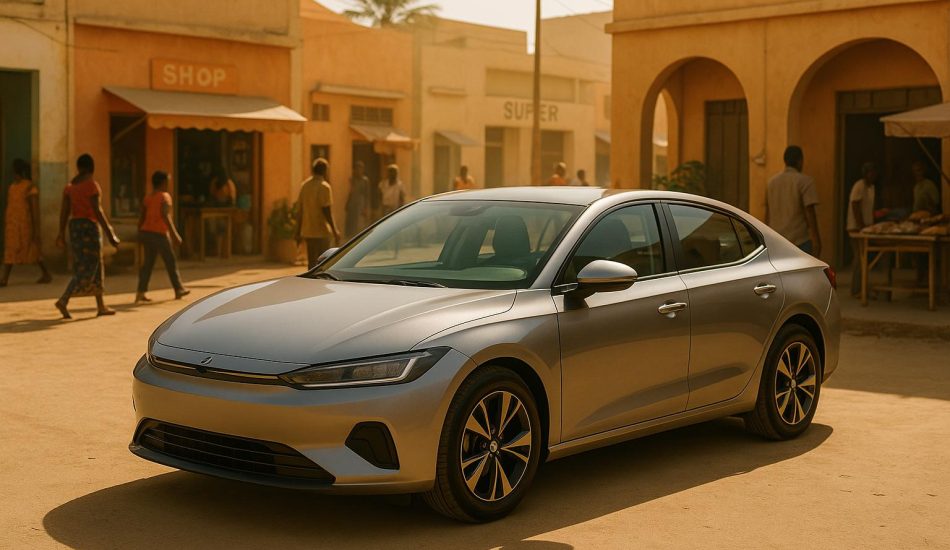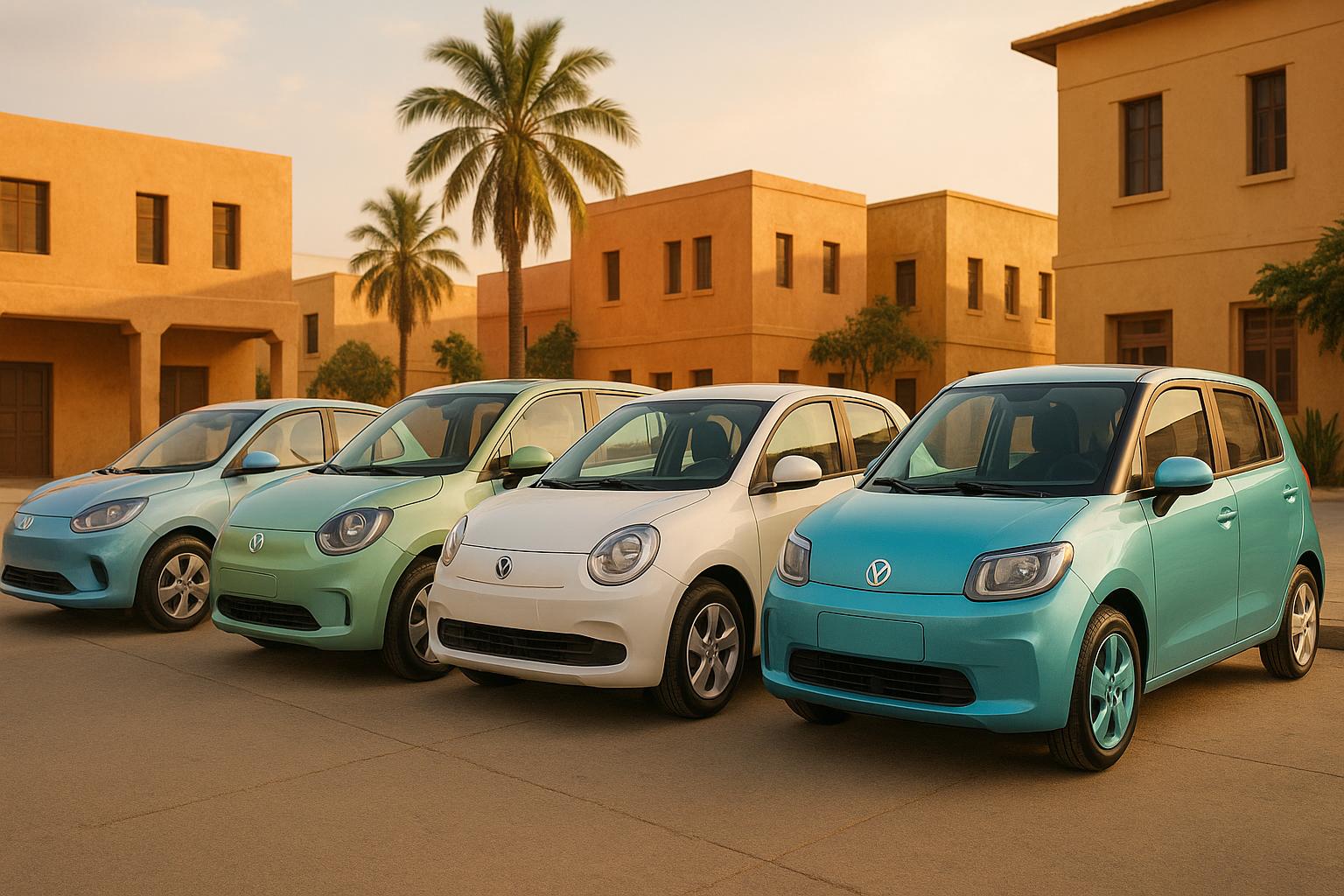
Africa’s EV market is growing fast in 2025, offering affordable options for buyers. Rising fuel costs and improved charging infrastructure in cities like Lagos and Abuja make electric vehicles a practical choice. Here’s a quick look at the best budget EVs available:
- BYD Dolphin: Priced at Ksh. 2.5–2.8M ($16,700–$18,700), offers a range of 300–400 km and 7-hour charging time. Modern features but limited after-sales support in some areas.
- Dongfeng Box: Costs around $10,918, designed for urban use with basic features. Affordable but lacks advanced options.
- Nissan Leaf (Used): Prices vary, but it’s a reliable option if you check battery health and import costs carefully.
- Dayun Yuehu S5 and GWM Ora 03: Awaiting detailed specs and pricing.
Key Takeaway: The BYD Dolphin is a feature-rich option, while the Dongfeng Box is the cheapest. Used Nissan Leafs provide flexibility but require thorough checks.
Quick Comparison
| Model | Price (USD) | Range (km) | Charging Time | Features | Availability |
|---|---|---|---|---|---|
| BYD Dolphin | $16,700–$18,700 | 300–400 | 7 hours | Modern, tech-rich | Kenya (expanding) |
| Dongfeng Box | $10,918 | N/A | N/A | Basic, urban use | Kenya |
| Nissan Leaf (Used) | Varies | Varies | N/A | Reliable, city use | Import required |
| Dayun Yuehu S5 | TBD | TBD | TBD | TBD | TBD |
| GWM Ora 03 | TBD | TBD | TBD | TBD | TBD |
Each model has pros and cons, so consider your budget, driving needs, and local service availability before deciding.
BYD Dolphin Surf Review – SA’s Most Affordable Electric Car

1. Dayun Yuehu S5
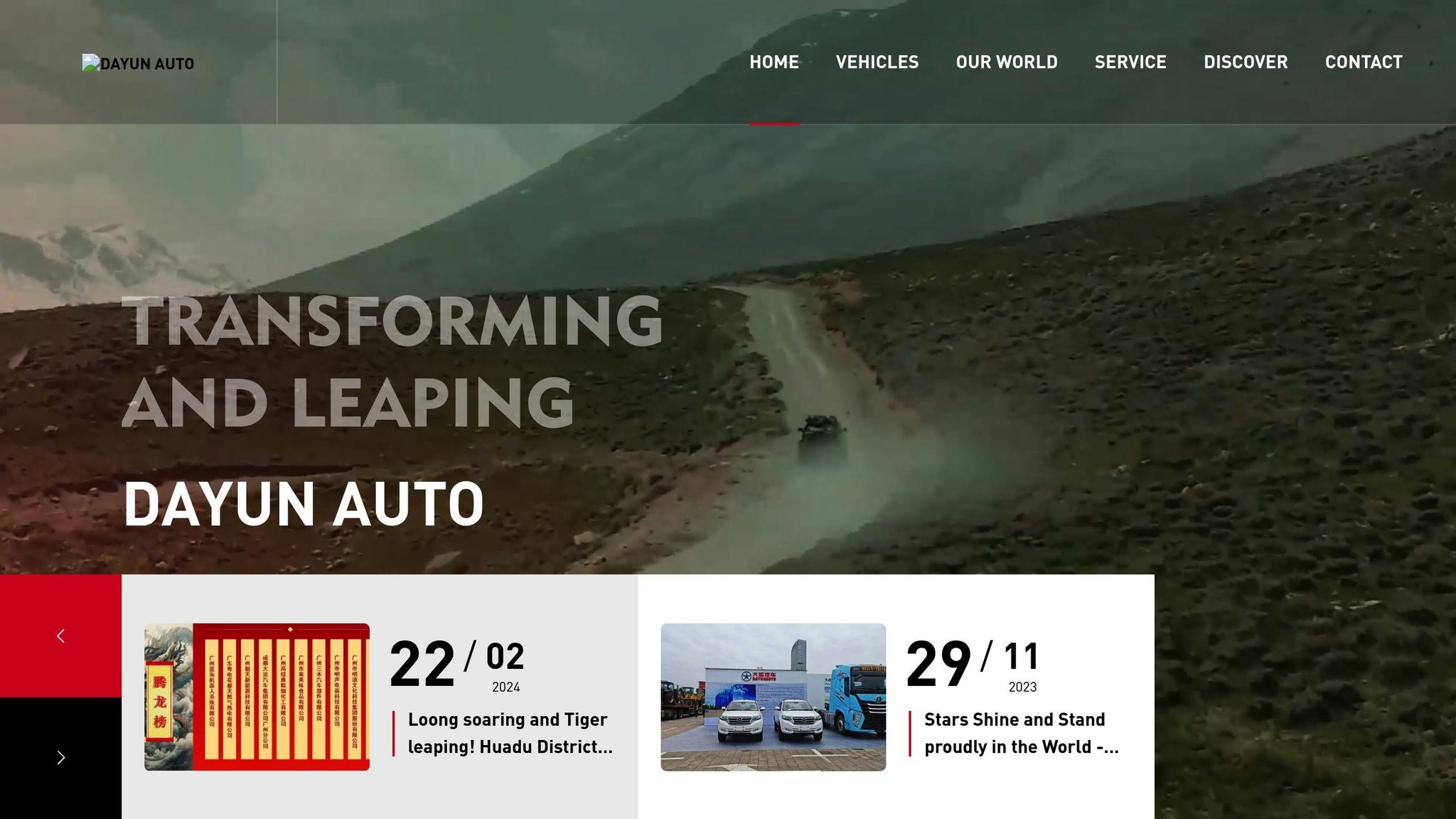
Information about the Dayun Yuehu S5 – such as its price, range, charging capabilities, and features – is currently unavailable. As soon as these details are released, we’ll provide an update to help you compare it with other budget-friendly options. Stay tuned!
2. BYD Dolphin
The BYD Dolphin is making waves in African markets as an affordable and practical electric vehicle (EV). This compact hatchback blends stylish design with useful features, making it an attractive option for young professionals and tech enthusiasts eager to embrace electric mobility without breaking the bank. Here’s a closer look at what it brings to the table.
Price
In Kenya, the BYD Dolphin is priced between Ksh. 2.5 million and Ksh. 2.8 million. This competitive pricing makes it a viable choice for middle-income buyers transitioning from traditional gasoline vehicles.
Range per Charge
The Dolphin delivers a range of 300–400 km (about 186–249 miles) per charge, depending on the model. This range is ideal for daily commutes and occasional longer trips.
Charging Time
Fully charging the BYD Dolphin takes approximately 7 hours, making it convenient for overnight charging or longer breaks. Its charging time fits seamlessly into most daily routines.
Key Features
The Dolphin boasts a modern infotainment system, advanced safety features, a comfortable interior, and a sleek exterior – all offered at an accessible price point.
Availability
BYD is expanding its presence across Africa, and the Dolphin is already available in Kenya, with plans to enter other markets soon. However, as a relatively new offering in Kenya, after-sales support may currently be limited. Even so, the Dolphin offers excellent value with low maintenance costs and the added benefit of eliminating fuel expenses compared to traditional internal combustion engine vehicles.
3. GWM Ora 03
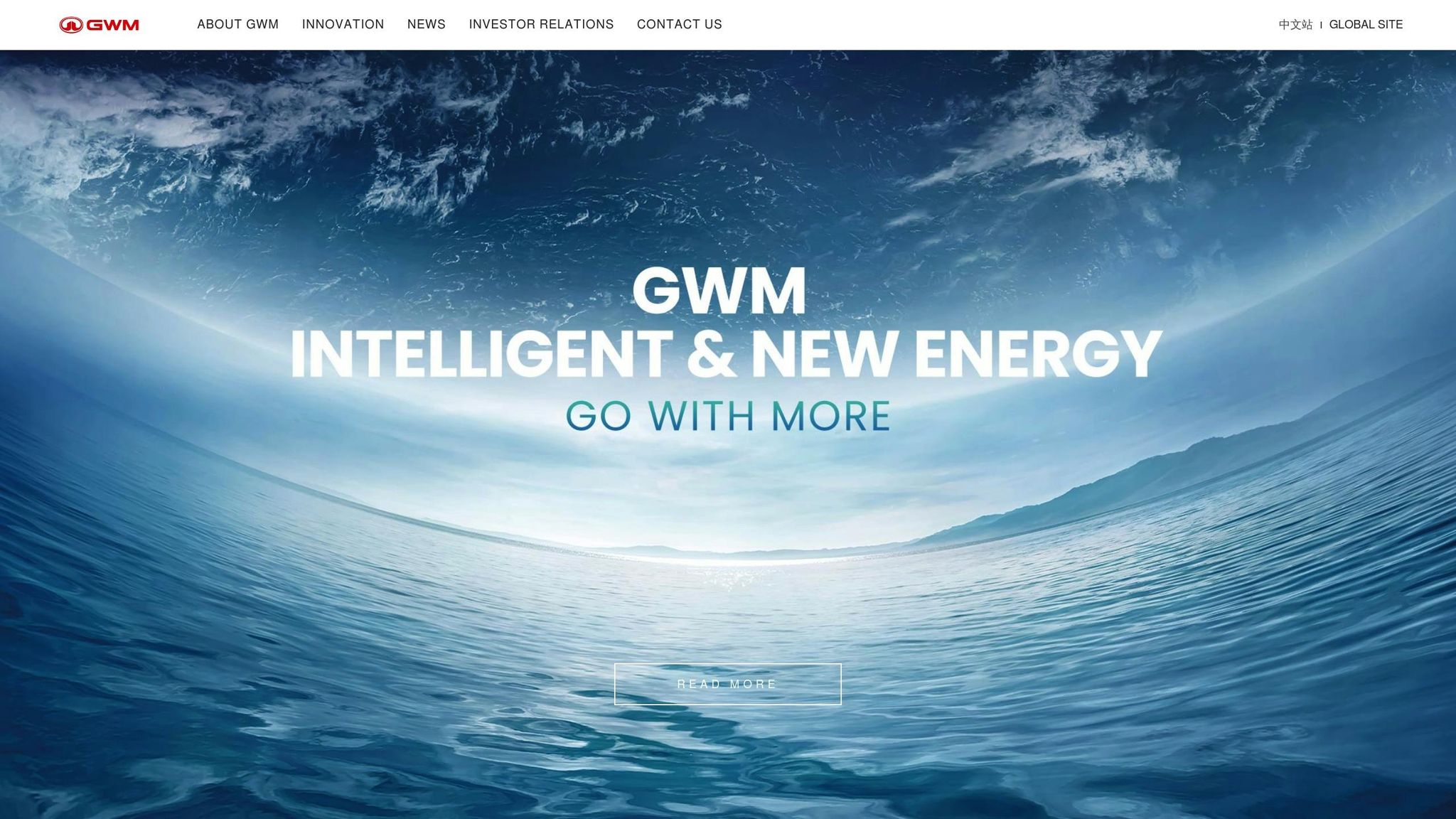
After exploring the BYD Dolphin, let’s turn to another contender in the EV market: the Ora 03. Great Wall Motor is preparing to introduce the budget-friendly Ora 03 to Africa. However, many of the specifics – such as pricing, range, charging times, and features – haven’t been disclosed yet. As soon as more details are available, EV24.africa will provide updates to keep you informed.
sbb-itb-99e19e3
4. Dongfeng Box
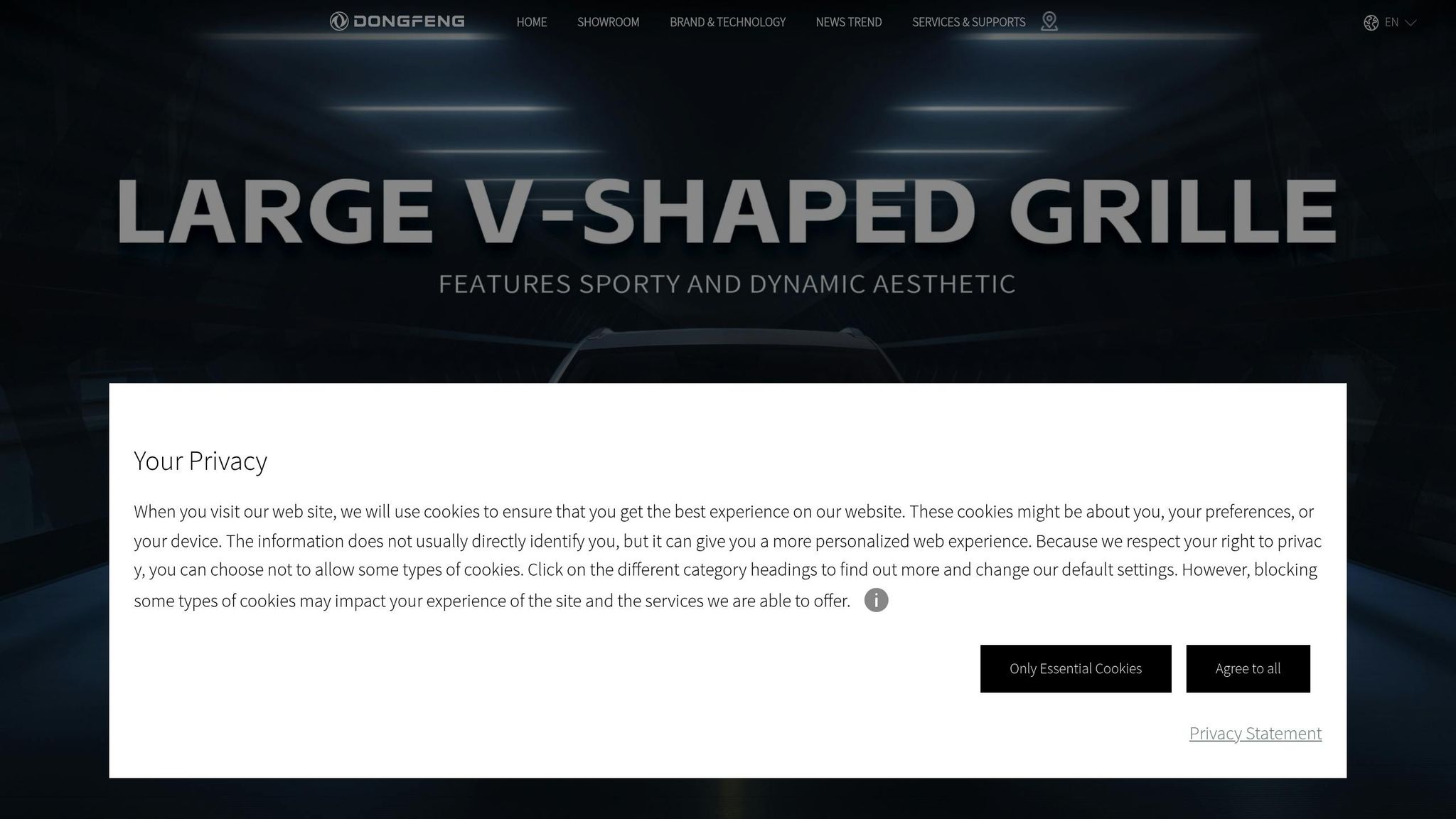
The Dongfeng EX1 Nano Box stands out as one of the most budget-friendly electric SUVs in Africa, offering an accessible option for buyers eager to embrace electric vehicles without breaking the bank.
Price (USD)
As of July 1, 2025, the Kenya Revenue Authority lists the Dongfeng EX1 Nano Box at KSh 1,583,128, which is roughly $10,918 USD. This makes it the fourth most affordable electric car available in the market.
Key Features
Designed to handle a mix of road conditions, this SUV features front-wheel drive and a sturdy build. Its compact size, combined with elevated seating, enhances visibility and makes it easier to navigate crowded city streets.
Availability
The Dongfeng EX1 Nano Box is readily available in Kenya, supported by government tax incentives, reliable import channels, and local dealership networks. While specifics about its range, charging capabilities, and other features remain scarce, its low price and practical design make it a compelling choice for those looking to switch to electric vehicles in Africa. This combination of affordability and functionality positions it as a strong contender in the region’s growing budget EV market.
5. Nissan Leaf (used market)
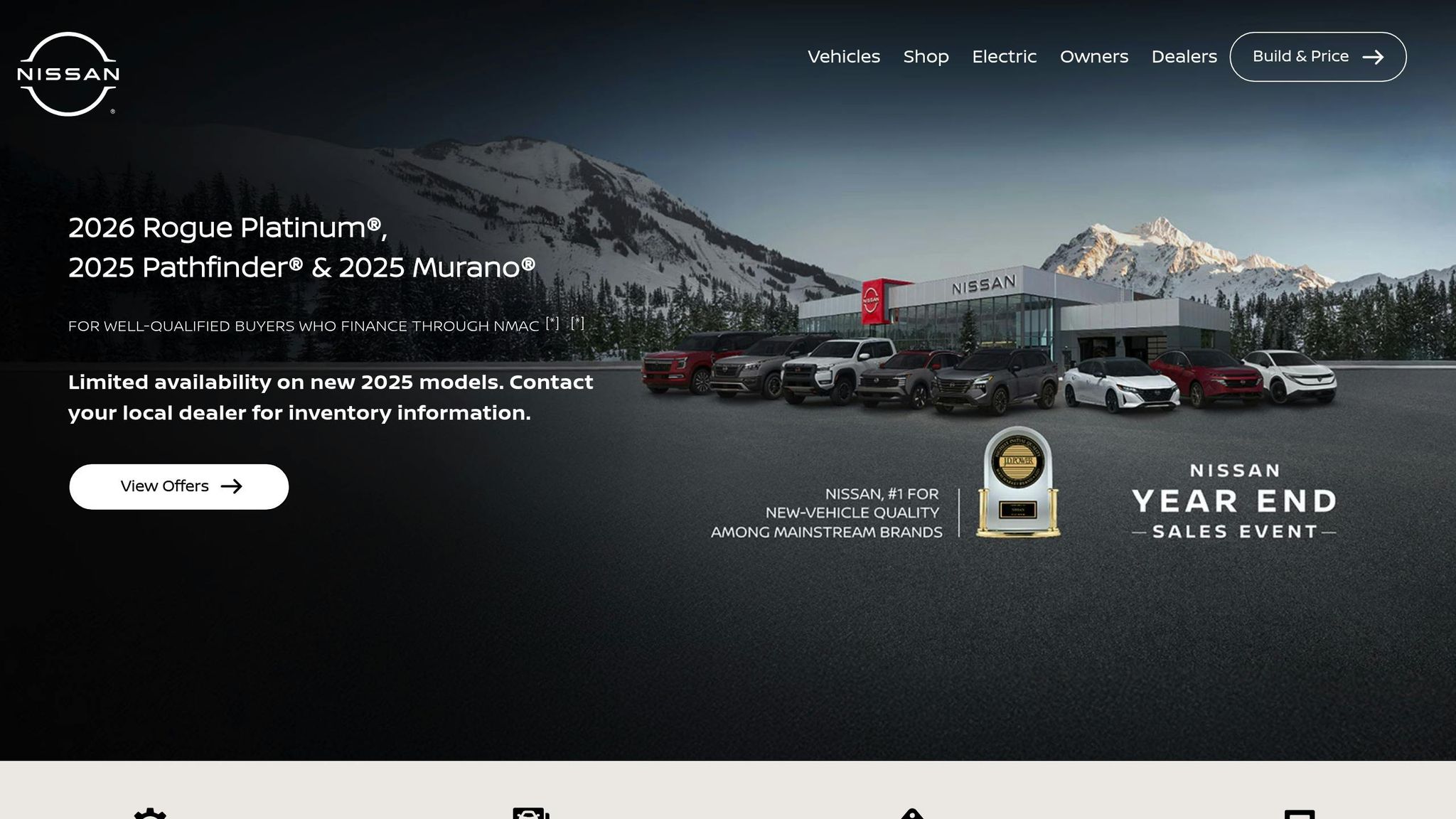
The Nissan Leaf, one of the best-selling electric vehicles worldwide, has gained traction in Africa’s used car market. However, its specifications can differ greatly depending on the model and condition. If you’re considering one, it’s essential to review local listings and thoroughly check the service history.
Price (USD)
The cost of a used Nissan Leaf hinges on several factors, including the model year, battery condition, mileage, import duties, and shipping fees. It’s a good idea to browse local listings for the most accurate pricing in your area.
Range per charge
The driving range of a used Nissan Leaf depends largely on its model year and the state of its battery. Over time, battery degradation can reduce the car’s original range. Make sure to discuss battery performance with the seller and, if possible, test it yourself.
Key features
The Nissan Leaf is well-suited for city driving, offering features like regenerative braking, comfortable seating, and infotainment systems. Keep in mind that features can vary by model, so confirm the specifics with the seller.
Availability
The availability of used Nissan Leafs can vary based on local import regulations and the development of charging infrastructure in your area. When purchasing, it’s crucial to verify the vehicle’s service history, the condition of the battery, and the availability of local support for maintenance and repairs. This wraps up our look at affordable EV options in Africa.
Advantages and Disadvantages
When it comes to budget EVs in Africa, each option comes with its own set of pros and cons. It’s important to weigh these carefully to find a vehicle that aligns with your needs and priorities.
The Dayun Yuehu S5 is still awaiting detailed evaluations. Key factors like affordability, range, and service support will play a significant role in its final assessment.
The BYD Dolphin stands out for its modern features and city-friendly range. However, it comes with a higher price tag compared to other budget-friendly options, and its service network is still in the process of expanding across various regions.
The GWM Ora 03 strikes a nice balance between style, performance, and features. Its compact design makes it a practical choice for urban settings. That said, buyers should double-check the availability of local service centers and spare parts before committing.
For those considering the Dongfeng Box, its simplicity is a key selling point, keeping upfront costs manageable. On the flip side, its basic design means it lacks advanced features, and long-term support might be limited.
Used Nissan Leaf models offer a tried-and-true EV platform. However, potential buyers need to carefully evaluate battery health, maintenance records, and any challenges related to importing the vehicle.
Beyond the individual strengths and weaknesses of these models, other factors can significantly influence your decision. Warranty coverage and the availability of service networks vary widely, so it’s crucial to confirm local support options. Additionally, local regulations and import procedures can add substantial costs to the vehicle’s base price, impacting both the initial investment and long-term ownership expenses.
Ultimately, these trade-offs underline the importance of conducting a thorough evaluation to ensure your chosen EV meets both your immediate needs and long-term expectations.
Conclusion
When it comes to choosing an electric vehicle (EV) in 2025, a few standout options emerge, each catering to different priorities and budgets.
The BYD Dolphin sits at the higher end of the budget-friendly spectrum. It offers a refined driving experience with advanced features, making it a strong contender for buyers who value comfort and cutting-edge technology. However, its premium price might stretch the wallets of some buyers. If you’re looking for a reliable model with proven technology, this one delivers solid value despite the higher cost.
For those balancing affordability and features, the GWM Ora 03 is a smart choice. Its sleek design, practical range, and competitive pricing make it a great fit for urban commuters. Its compact size is especially well-suited for navigating Africa’s busy city streets, and it doesn’t feel like a compromise compared to pricier models.
If your main goal is to keep costs as low as possible, the Dongfeng Box offers an entry-level option for EV ownership. While it comes with a no-frills approach and lacks advanced features, it provides a way to embrace emission-free driving. That said, the trade-offs in comfort and functionality are worth considering.
For savvy buyers willing to explore the used market, the Nissan Leaf presents an intriguing alternative. With careful research into import procedures and battery health, this option can offer excellent value. However, it does require more effort and mechanical know-how compared to purchasing a brand-new vehicle.
Beyond the vehicles themselves, service network availability plays a critical role. Even the most affordable EV can become costly if parts or qualified technicians are hard to find. Before committing to a model, ensure it has reliable service support in your area.
Ultimately, the right EV for you depends on balancing upfront costs, performance, and ongoing support. For many African buyers in 2025, the GWM Ora 03 stands out as the best overall choice, blending affordability, features, and accessibility. However, if your budget allows and you’re drawn to premium features, the BYD Dolphin offers a worthwhile upgrade with its superior quality and technology. Don’t forget to account for import duties and local regulations, as they can significantly impact the total cost of ownership.
FAQs
What should I consider when deciding between a new budget EV and a used Nissan Leaf in Africa?
When choosing between a used Nissan Leaf and a new budget EV in Africa, there are several important aspects to consider:
- Upfront Cost: A used Nissan Leaf is generally cheaper to purchase initially, making it an appealing option for those on a tight budget. However, a new budget EV might offset its higher price over time with improved energy efficiency and manufacturer warranties.
- Battery Health: Older EVs, like the Nissan Leaf, often come with diminished battery capacity due to wear and tear. This can reduce both the vehicle’s range and overall performance, so it’s worth checking the battery’s condition before buying.
- Features and Technology: New budget EVs tend to offer updated technology, including modern safety features and upgraded infotainment systems, which may enhance your driving experience.
- Maintenance and Support: Access to service centers and replacement parts is crucial. New budget EVs may benefit from local service networks, while the Nissan Leaf has a well-established global support system that could make maintenance easier.
Your decision will ultimately hinge on your financial situation, driving habits, and whether you prioritize upfront savings or the perks of modern technology.
How do import duties and local regulations influence the cost of owning an electric vehicle in Africa?
Import taxes and local rules heavily influence the cost of owning an electric vehicle (EV) in Africa. High import tariffs can drive up the initial price, putting EVs out of reach for many potential buyers. On the other hand, some countries that support local assembly of EVs often cut or waive certain taxes, which can make these vehicles more affordable.
In addition, a few governments offer incentives like tax breaks or subsidies to encourage EV adoption. However, these benefits differ significantly from one country to another. To get a clear picture of how these factors might affect the overall cost of owning an EV, it’s essential to look into the specific policies in your country.
What should I consider about service networks when buying a budget EV in Africa?
When considering a budget EV in Africa, one of the key factors to keep in mind is the availability of service networks for maintenance and repairs. Having reliable access to trained technicians, spare parts, and service centers can make a big difference in avoiding unnecessary time, costs, and frustration.
It’s a good idea to focus on brands or manufacturers that have a strong presence in your area. Check if they provide mobile servicing options or collaborate with local mechanics. This not only helps keep your EV in top shape but also minimizes downtime in case any problems occur.


